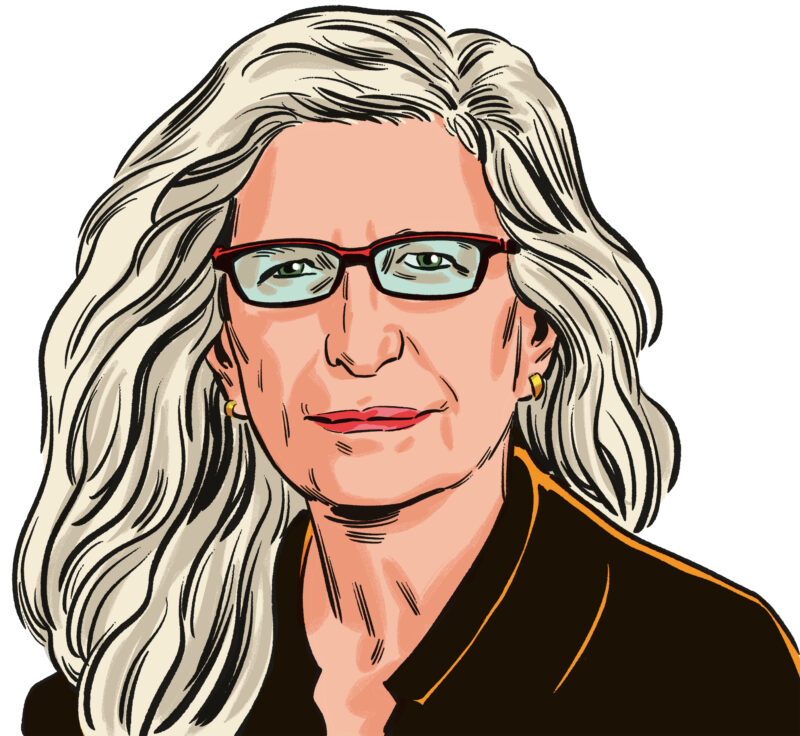In many ways, I am an unlikely choice of interviewer for a subject like Annie Leibovitz. While I am trained as a photographer and still utilize photography across my work, for the most part I no longer author my own pictures. So I was skeptical when the call came: Were the editors of The Believer sure they wanted me for the job? Wouldn’t the magazine do better with someone more closely aligned with Leibovitz’s work—straddling the art, reportage, and editorial worlds as it does? But deep down I felt this request was tugging on my young self: As a teenager growing up in 1990s Philadelphia, I obsessively collected Leibovitz’s pictures from magazines, taping them up all over my walls, such that the walls, in fact, disappeared under their many layers. Gap ads, Rolling Stone magazine covers, and, most of all, pictures from the “got milk?” campaign filled my little room by the hundreds. I was, it might be noted, unaware that these were her pictures. At that point, I didn’t know anything about who made the images I was obsessed with, images I wanted to live with and inside. I had only my teenage desires to guide me. And they propelled me toward her at full tilt.
Almost three decades later, on this occasion, I miraculously got the chance to speak to Leibovitz, the person who had informed my own burgeoning photographic consciousness, curiosity, and ambition. I once heard someone say that we are all born with Beatles lyrics in our heads, so deep is their creative mark on the world. The same might be said for Leibovitz’s pictures (as evidenced by my own teenage image-collecting pursuits): she has been making this work for so many decades, and with such consistency, innovation, and panache, that it feels hard to imagine the cultural landscape without her impression.
You have reached your article limit
Sign up for a digital subscription and continue reading all new issues, plus our entire archives, for just $1.50/month.
Already a subscriber? Sign in





